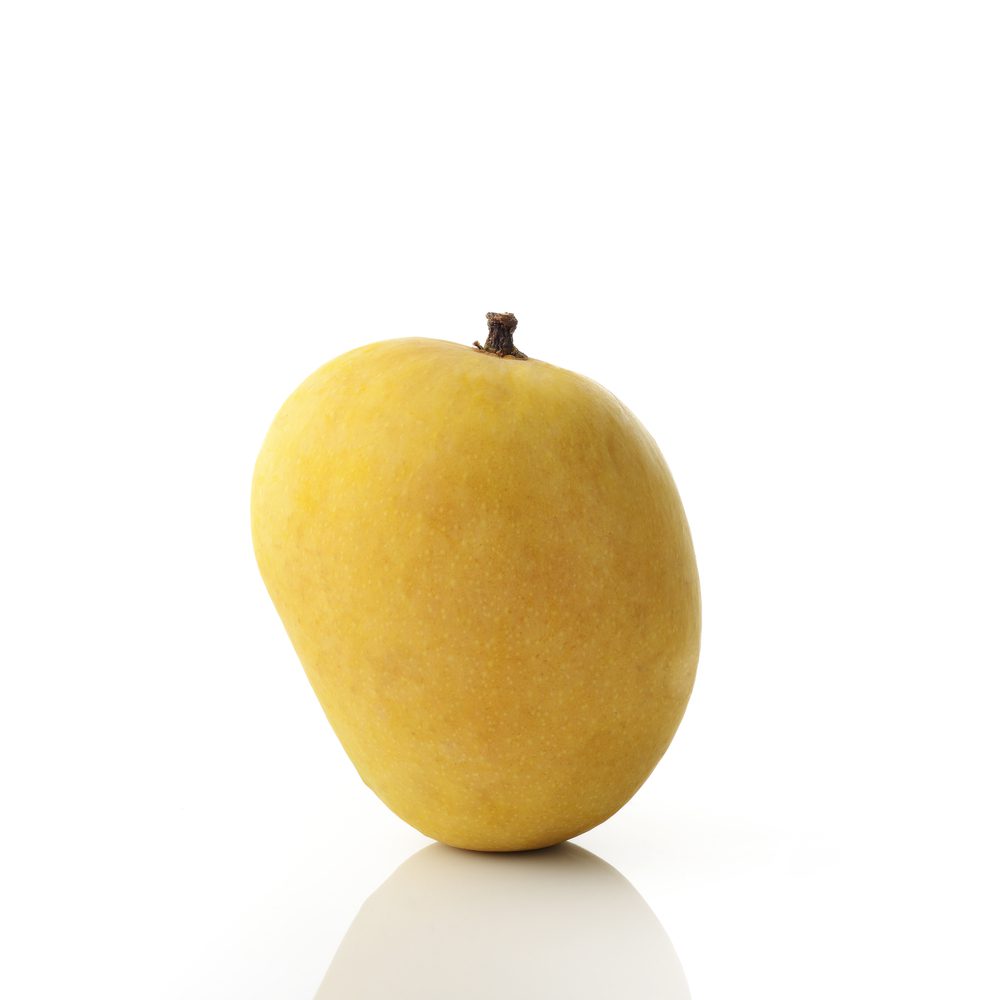One taste of a perfectly ripe mango is enough to make anyone a lifelong fan of the juicy, sunset-hued fruit. Here’s everything you need to know about mangoes, from their many varieties to ripeness indicators and the best cutting techniques.
Where Do Mangos Come From?
The mangos you’ll find at grocery stores and specialty produce markets are usually imported. That’s because evergreen mango trees only thrive in tropical climates. U.S. mango growers can be found in Florida, California, Hawaii, and Puerto Rico, but their supplies are limited compared with producers in Southeast Asia, Australia, the Caribbean, Latin America, and South America.
Mangos are native to India, where they have been cultivated for over 5,000 years. There, mangoes symbolize love and friendship, and traditional paisley designs were originally based on curved mango shapes. Over time, the fruit has traveled around the world and is now an integral part of most tropical cuisines. In fact, mangoes are the No. 1 fruit in the world, outpacing banana consumption by 3 to 1!
How to Tell If a Mango Is Ripe
Each mango variety has its own ripeness indicators (more on that below), but the best way to tell if a mango is ripe is its feel and smell. The fruit should give slightly when gently squeezed (like an avocado) and have a fragrant scent that’s similar to peaches.
The biggest issue when shopping for mangoes is over-ripeness. When mangoes pass their prime, they can become unpleasantly fibrous and develop a strong turpentine-like scent and flavor. Avoid fruit that is soft and bruised or mangoes that have lots of dark freckling or large black spots. The best approach is to select firm, mature fruits, then let them ripen at home at room temperature.
How to Store Mango
Unripe mangoes can be kept at room temperature for three to four days until they ripen. After that, they should be stored in the fridge. Cut mangoes will stay fresh several days in the fridge or can be frozen up to 6 months.
How to Cut a Mango
Mangoes have long, flat, hard pits, and tough, bitter skin. Here are the three best ways to peel and slice the tropical fruit.
The Classic Method: Split and Score
A mango’s long, flat pit makes it impossible to slice straight through the middle. Instead, work around the pit by slicing off the lobes on either side.
- Stand a mango stem-end-up on a cutting board. Slice down just to the side of the stem, running the knife as close to the pit as possible. Repeat on the other side.
- Once you’ve cut away both lobes, score a grid pattern into the fruit without cutting through the skin.
- Scoop out the cubes with a soup spoon, or press the skin side to flip the lobe inside out and slice off the cubes with a knife.
- With the remaining center slab, slice off the two narrow strips of fruit on either side of the pit. Lay each strip flat to slice the skin from the fruit.
Twist and Scoop
Made famous on TikTok, this quick-and-dirty method works best when you’re eating a fully ripe mango all by yourself.
- Make a crosswise cut all the way around the pit.
- Twist the mango halves in opposite directions to release the pit from one side.
- Remove the pit from the remaining side with a spoon.
- Scoop out the mango flesh the way you would a melon. Eat any fruit still stuck to the pit like an ice cream cone.
Peel With a Drinking Glass
This quick trick lets you avoid handling the juicy, slippery fruit when peeling.
- Slice off the lobes as described in the first step of The Classic Method.
- Press the edge of a mango lobe against the rim of a sturdy, wide-mouthed glass, then slide the glass rim between the mango flesh and the skin to remove the peel.
- The glass will catch the fruit (and any juice).
- Cut the fruit from the pit as directed in The Classic Method.
Mango Types
Mangoes are available year-round, though types and origins may vary from season to season. Here’s a rundown of the most common varieties and when they’re available.
Tommy Atkins Mango
Available March–July
Tommy Atkins mangoes are large and mild with a hint of citrus and dense, juicy flesh. This variety is a great all-purpose mango, which is why it’s the most readily available kind in North America.
Ripeness indicators: Tommy Atkins mangoes develop a predominant red blush over their golden-green skin as they ripen. When overripe, the skin begins to sag, and black spots appear.
Ataulfo or Honey Mango
Available March–July
Small, bright yellow with a honey-sweet, tropical flavor and smooth, fiberless flesh. Soft Ataulfo or honey mangoes are ideal for blending into smoothies, sauces, and nice creams.
Ripeness indicators: The skin starts to turn a deep yellow gold and will wrinkle slightly when the fruit is fully ripe.
Keitt Mango
Available March–April, August–September
Citrusy, with firm flesh and deep green skin. The fruit keeps its shape when sliced or diced for salsa and salads.
Ripeness indicators: Keitt mangoes have skin that remains green, even when ripe. The fruit should feel soft (like a peach) and smell fragrant.
Haden Mango
Available March–May
Haden mangoes are ultra-peachy, slightly sour, and firm. The medium-size fruit is more round than oblong, with skin that’s green, gold, and red. Use anywhere you’d use fresh peaches.
Ripeness indicators: The green skin turns yellow as it ripens, and the red blush becomes more predominant.
Francis or Haitian Mango
Available May–June
Francis or Haitian mangoes are slightly S-shaped, super-sweet, and somewhat fibrous with green-yellow skin. Francis mangoes are best in raw recipes where their fibers aren’t as noticeable.
Ripeness indicators: The yellower the skin, the riper the mango. The fruits are also very fragrant when ripe.
Kent or Florida Red Mango
Available December–February
Kent or Florida red mangoes are juicy and sweet-tart with green skin. The creamy, deep-orange flesh is smooth enough for blended recipes, and firm enough for slicing and dicing.
Ripeness indicators: Green-gold skin with yellow freckling is a sign of optimal ripeness. The fruit may also develop a rosy blush over a small area.
Alphonso Mango
Available April–July
Golden on the outside with saffron-hued, creamy, non-fibrous flesh. Alphonso is known as “the king of mangoes” in India, where it’s eaten for breakfast, blended into drinks, and added to spicy curries.
Ripeness indicators: Greenish-yellow skin turns more golden and the fruit becomes lusciously fragrant. Alphonso mangoes can become over-ripe very quickly.
Recipes to Try Today
Check out our collection of favorite vegan mango recipes for more ways to enjoy the sweet, tender fruit!
National Mango Board photos used with permission. All rights reserved.

Related News
Get Our Best Price On The Forks Meal Planner

Forks Meal Planner takes the guess work out of making nutritious meals the whole family will enjoy.




